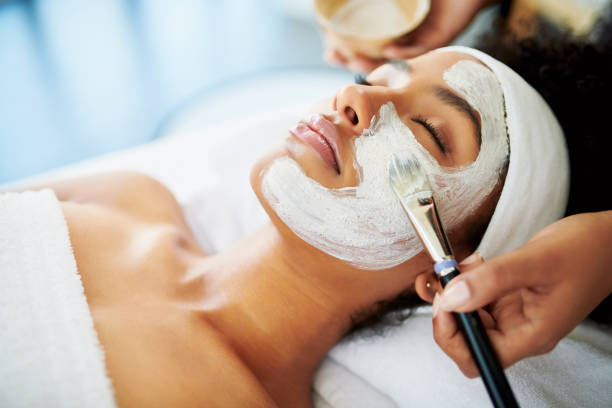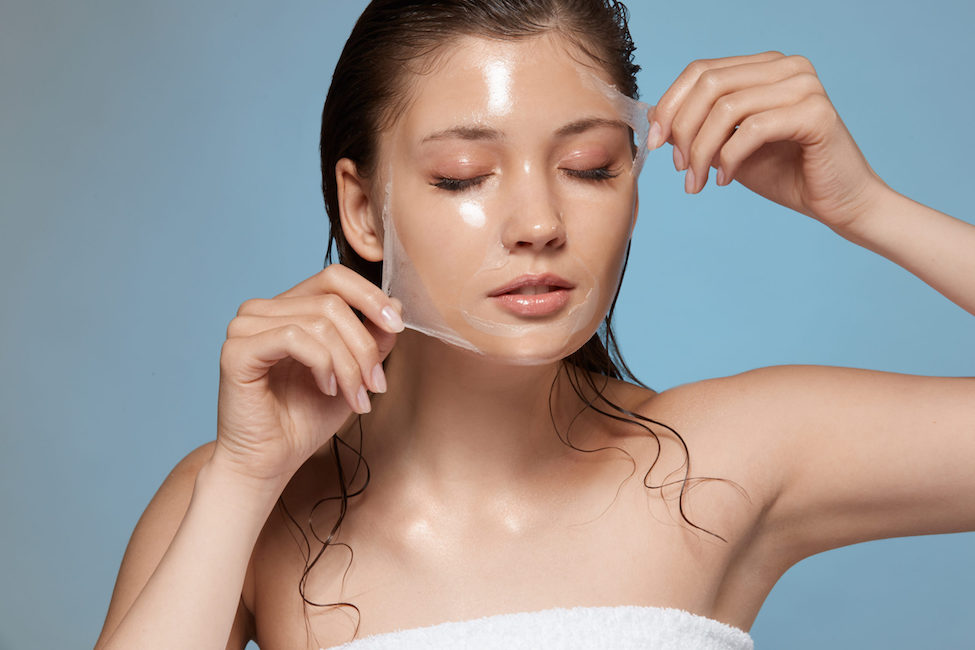Plastic Surgeon
Scottsdale

Conveniently located to serve the areas of Mesa, Tempe, Gilbert and Scottsdale, AZ
Contents

A chemical peel is a rejuvenating dermatological method that is crafted to exfoliate, enhance, and smooth the skin’s texture. Chemical peels are used primarily on the face, but it is possible to have them done on the arms, legs, chest, and stomach.
Chemical peels can treat superficial wrinkles, dark spots, and other skin ailments. The procedure can brighten up the face while achieving balance in skin tone and coloration. Multiple studies have indicated that chemical peels are an essential tool in the skin rejuvenation family’s arsenal.[1] The success of any peel is dependent on the physician’s understanding of the chemical and biological processes, indications, clinical effectiveness, and potential side effects of the procedures.[2] Multiple studies have concluded that chemical peels are a safe method to treat a variety of skin conditions and reduce the aging effects.[3]
At Scottsdale Plastics, your chemical peel’s depth will be specifically tailored to your skin issues during your consultation with Dr. Robert G. Bonillas. Chemical peels typically take less than 45 minutes and have minimal downtime.
Immediately approachable and emphatic in his views that a team approach between doctor and patient creates successful outcomes. Dr. Bonillas promises to instill confidence in his patients as he produces their desired enhancements.
Please contact us online or call now at (480) 245-6380, and one of our friendly staff members will help you through the process of scheduling your personalized evaluation.
Keep reading to learn more about the benefits of chemical peels.

Be sure to stay up-to-date on any specials and events by following Dr. Bonillas on social media. You can find him and the rest of the Scottsdale Plastics team on Instagram, Facebook, and Youtube. We look forward to meeting you.
Scottsdale Plastics is conveniently located to serve the areas of Mesa, Tempe, Gilbert, and Scottsdale, AZ.
Chemical peels clear away the skin’s outer layers through a chemical solution that sparks a controlled injury to the epidermis. With the now-dead skin proceeding to peel off, the body’s healing process regenerates new skin tissue, creating a smoother surface with fewer wrinkles as a result.
We highly advise that you seek the direction of a board-certified plastic surgeon or dermatologist before pursuing any type of chemical peel.
There are three types of chemical peels, ranging from mild to strong. Formula strengths are customized for each patient. They may be covered by insurance if they are performed for medical rather than cosmetic reasons.
AHAs are the mildest of all the formulas and creates light peels, also known as superficial peels. These peels are suitable for dry or sensitive skin and great for skin brightening, treating acne, and hyperpigmentation. AHAs can be mixed with facial washes, creams, etc., as part of a daily skincare regimen.
TCAs are the most widely used medium-strength chemical peels, coming in many strengths and combinations. Medium strength peels are more potent than light peels, can only be administered by a physician, and require a couple of downtime days. TCAs are commonly used to treat acne scars, deep wrinkles, and hyperpigmentation.
Phenol peels have the most potent level of peel solution and can only be administered by a physician. Also known as carbolic acid, phenol peels penetrate the skin on a deeper level and usually only require one session. These types of peels treat deep acne scars and wrinkles. There is much more downtime associated with phenol peels, with redness and peeling lasting up to a week.
The ideal candidate for a chemical peel is a healthy individual who wants to treat the signs of photoaging and sagging skin.
Prospective candidates may not qualify for chemical peels if they:
Before you choose to get a chemical peel, you will want to schedule a consultation with Dr. Bonillas to discuss your goals and expectations. He will examine your skin and provide you with a pre-treatment plan. This plan will depend on your skin’s level of thickness, texture, and tone.
In the days and weeks leading up to your chemical peel, you will want to:
You will want to avoid:
Before your peel, Dr. Bonillas will cleanse your face and dry it off. Then, he will apply the chemical peel solution with either a cotton ball, brush, gauze, or sponge. Afterward, the solution is washed off, and Dr. Bonillas may apply ointments along with a cooling compress to the treated area.

One should expect a period of redness, inflammation, irritation, and dryness with any chemical peel. This is all-natural and part of your body’s healing process creating new skin tissues. Be warned that redness can potentially last for months. Dr. Bonillas may prescribe pain medication depending on your level of treatment. The swelling will eventually fade as your skin starts to develop a crust that will flake away in time.
Overall, the results that chemical peels produce are:
Botox is the iconic injectable neuromodulator known for creating a taut, youthful look resulting from the blockage of the chemical responsible for tensing the muscles. Great for both men and women.
Eyelid surgery, or blepharoplasty, is a procedure designed to tackle excess droopy, puffy skin around the upper and lower eyelids to produce a more vibrant, alert, and younger-looking appearance.
A mommy makeover is a package procedure combining liposuction, a tummy tuck, and a breast enhancement so that a woman’s body can be restored back to its pre-pregnancy glory. Moms deserve to feel attractive, and a mommy makeover can bring that feeling back.
Scottsdale Plastics accepts cash, personal checks, and most major credit cards, including Visa, Mastercard, American Express, and Discover. For a complete listing of payment options, please visit our financing page.

Multiple scientific studies have concluded that chemical peels remain a rapid, safe, and cost‐effective technique for skin rejuvenation, particularly in our aging, photodamaged population.[4] If you enjoyed learning about the benefits of chemical peels, we recommend checking out the Scottsdale Plastics Beauty Talk Blog. You will find all sorts of great content like educational articles, FAQs, media appearances, opinion pieces, and much more. Don’t forget to stay updated on procedures and events by following Dr. Bonillas on social media. Follow him on Instagram, Facebook, and Youtube.
We look forward to seeing you.
A chemical peel is a rejuvenating dermatological method crafted to exfoliate, enhance, and smooth the skin’s texture by removing the outer layers through a chemical solution. This solution encourages a controlled injury to the skin. Once the healing process peels away the dead skin, it reveals the new underlying skin tissue. This procedure results in smoother and less wrinkled skin.
No. Although they are primarily used on people’s faces, getting the procedure done on the arms, legs, chest, and stomach is possible too.
Chemical peels come in three strength levels: light, medium, and deep. Their corresponding peel solutions are alpha-hydroxy acids, trichloroacetic acid, and phenol.
Chemical peels can treat skin conditions like large pores, sun damage, acne scars, crow’s feet, wrinkles, and sagging.
No, you should not engage in strenuous physical activity or any action that would produce a lot of heavy sweating after your chemical peel. One should wait a few days before resuming exercise again.
The amount of chemical peels needed depends on the severity of your skin conditions and your treatment plan. Light peels should be scheduled on a monthly basis—medium peels every four to six months. Deep peels should only be done once every few years.


